Ursus A (1925)
 Light Truck, c880 produced 1928-31
Light Truck, c880 produced 1928-31
Ursus A was a series of Polish lorries and buses from the Polish Company Ursus, a license-built modification of the Italian SPA 25C Polonia. trucks. This was a gradual process, with the SAP 25C being purchased, then assembled, and the built entirely locally in 1925-28, the the modified Ursus-A which differed in some point. It was replaced from 1931 by the Polski Fiat 621 but many were still active in 1939.
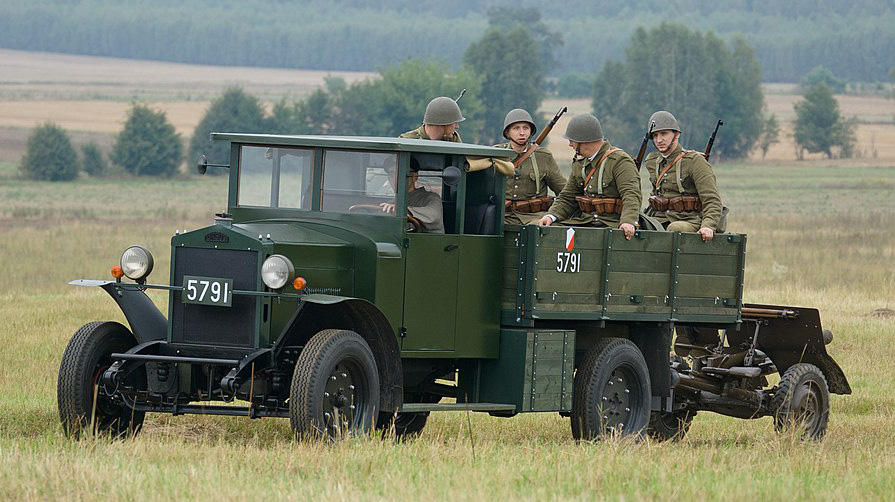
Development
About Ursus

The Ursus Factory was founded in 1893 on 15 Sienna Street, Warsaw, by three engineers and four businessmen. It was first named: Towarzystwo Udziałowe Specyalnej Fabryki Armatur (Company of a Special Factory of Fixture), later with an addition: i Motorów (and Motors).
In WWI it worked under tsarist control, producing internal combustion engines, but it was looted a first time in 1915, then again during the Russian Revolution, and gutted further afterwards beinfore being recaptured by the Poles. In 1920 it was reorganized as a public share company (S.A.). and started to repair Polish Army trucks. From 1922, the company built agricultural tractors based upon International Harvester Titan. In 1922 the name became Zakłady Mechaniczne Ursus (Ursus Mechanical Works).
A cooperation encouraged the company's management to propose a truck factory in Poland. Negotiations with the Main Office of Army Supply (GUZA) led to the production of trucks useful for the civilian market and the army. The plants received a loan from the government, equivalent to 500 thousand dollars, to launch production of two types of trucks.
However, the agreement was not implemented because "Ursus", taking advantage of the inconsistencies in the agreement and the fact that part of the loan was not paid on time, did not fulfill its part. All the resulting losses were garanteed by the state treasury. From the money received, it was only possible to buy land in Czechowice near Warsaw to build a future factory.
See more here (in Polish)
From the SPA 25C Polonia to the Ursus A
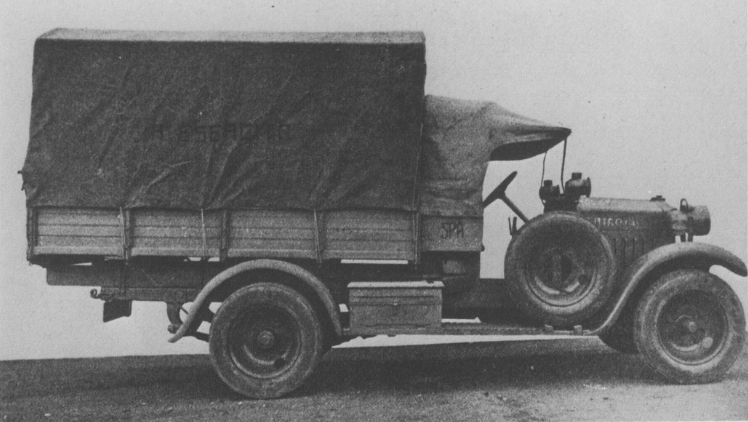
In 1924, the Polish government ordered a large series of license-built trucks, all purchased to friendly countries. One was the 3-ton Berliet CBA lorry and the other the 1.5-ton SPA 25C Polonia truck. Ursus was to deliver dome 1,050 trucks in three batches: 200 Berliets and 150 SPAs each. Licenses were purchased as well as a first batch of both from France and Italy, the second locally assembled from imported parts,and a final batch entirely produced locally. From 1928, the factory started to manufacture entirely locally the new Ursus A truck.
Ursus started building a new factory in Czechowice, near Warsaw to setup these new new production lines, but construction was slow. Eventually, the Polish Army agreed to buy 400 Berliets as a complement from France, allowing Ursus to focus solely on SPA production. On 11 July 1928 the first 52 Ursus A left the factory.
The SPA 25C, later Fiat-SPA 25C, was a light truck from Società Piemontese Automobili from 1925, both for the civilian market and Italian Royal armed forces. It was built in two versions, the SPA 25C/10 and SPA 25C/12, with different engine capacity and power. It replaced the Fiat 15ter. The SPA 25C was also used by the Regia Aeronautica. The 25C was replaced in turn by the Fiat-SPA 36R and 38R. The 25C/10 used as base for the Polonia, had a 2,700cm3 cc engine for 39 hp, and 4,8t fully loaded. The 25C/12 was beefier with a 50 hp engine and 5t.
The 25C Polonia had a chasss length of 5915 mm, width 1800 mm, Wheelbase 3800 mm, Front track 1510 mm, Rear track 1500 mm. It had a Ground clearance of 350 mm for a standard unladen weight or 2.5 t. Top speed was 40-45 km/h for a fuel consumption of 33l/100 km.
Design

The Ursus A was basically a modification of the Italian truck, adapted to harsh Polish winters and poor roads. Modifications were minor at first, but the Ursus was reinforce to carry a larger payload (2.5 tons instead of 2) and had a simplified cooler. Over time, more modifications were brought in, notably three types of cab, leading to variants (see below). The Ursus A was manufactured until 1931, replaced by the more modern Polski Fiat 621. In all 884 were delivered, 509 for the civilian market, the remainder for the Army.
Chassis and general design
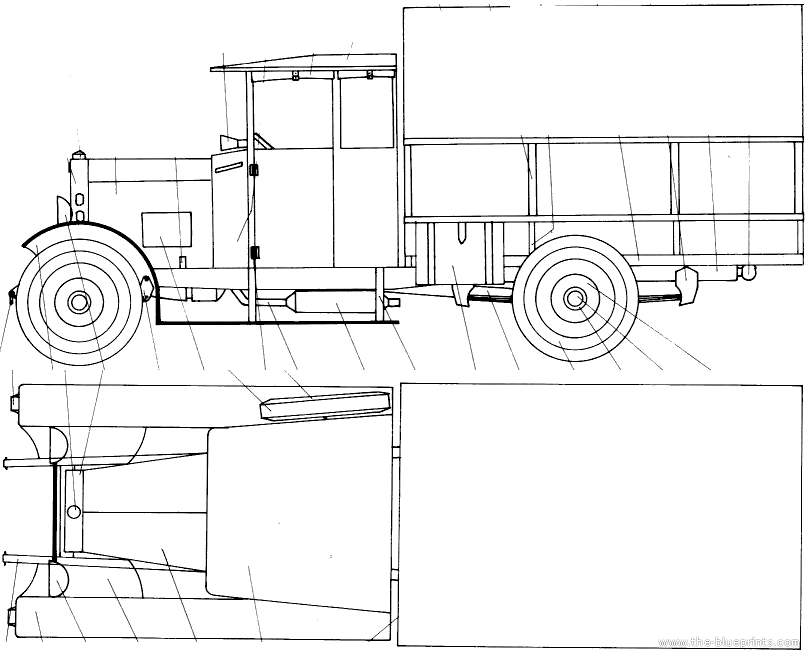
The original SPA 25C Polonia had chassis made of pressed sheet metal side members, with leaf spring suspension, two axles, wheelbase of 3.25 meters. The chassis was 4.465 m long, the track 1.51 m. Wheels used steel discs, with pneumatic tires with the forward axles for steering, second axle with twin roadwheel for propulsion (rear drive). The layout was classic for a military truck, with a ladder type frame chassis onto which was mounted the flatbed at the rear, high enough to clear the rear axles tires. There were no mudguards.
Mobility
The engine was a four-cylinder petrol engine, water-cooled, with forced-drop pressure feed, and fed by a Zenith 36A carburetor and Magneti Marelli SA4 ignition. The transmission used universal joints on the rear axle. There was a 4-speed gearbox and one reverse gear, plus a multi-disc clutch. The starting was manual, with the electric started only available on some versions.
More technical details
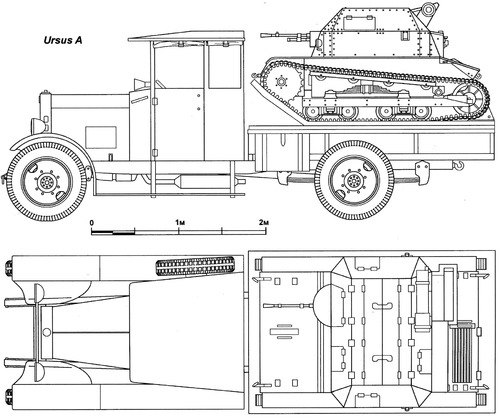 Transporting a TK-3 tankette
Transporting a TK-3 tankette
Little has been found about the Italian SPA 25C built in Poland but in 1924, MSWojsk signed an agreement with "URSUS" S.A. for the pre-production delivery of 450 SPA 25C Polonia trucks, an Italian modification adapted to Polish road conditions. 3 batches of 150 units were delivered, the first Italian-made, next assembled by URSUS, third fully produced by Ursus. The MSWojsk plant however failed to be setup in time and the second batch was imported from Italy in an assembled state. In 1928, the third batch was assembled.
The SPA 25C truck had a load capacity of 1500-2000 kg and a segmented, detachable radiator, in which forced water cooling was used, as well as a special carburettor, easily replaceable. The truck had a multi-plate, dry clutch, which could be changed without removing the engine, and a drive shaft in a cover, one with the rear axle. There were standard pneumatic tires. The fuel tank had 115 l capacity for 320 km on flat. The driver's cabin received sheet metal, fixed roof and windscreen in the last version but rolled-up canvas covers on its sides. The SPA engine was a carbureted, 4-cylinder, 4-stroke, bottom-valve, water-cooled unit displacing 2000 cm3 and rated for 35 HP (25.8 kW), at 2000 rpm. They had Overmann 895x135 mm tires, later the Polish Stomil 31x6” tires.
Variants
Ursus A
Basic type, undercarriage and cab only:
-First variant: open cab, with, folding canvas top
-Second variant: Fixed roof cab, open side windows.
-Final variant; Fully enclosed cab with windows that can be open.
Ursus A30
Modernised undercarriage
Ursus AW
Lengthened frame adapted to up to 3 tonnes of payload, mostly used for bus construction
Ursus AT 3
All-terrain version with three axles (prototype)
Armoured car on Ursus A chassis.
 Wz.29 Ursus armored car
Wz.29 Ursus armored car
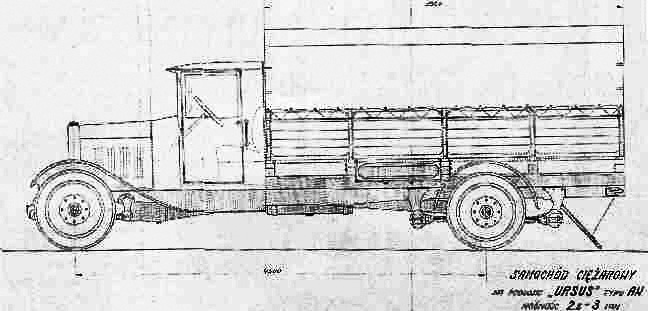 Ursus AW plan
Ursus AW plan
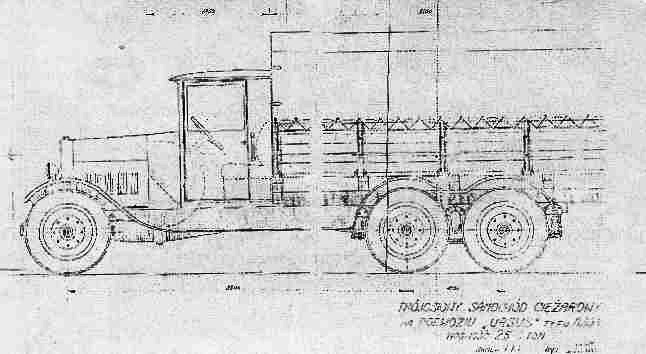 Ursus A303 Plan
Ursus A303 Plan
specifications |
| Dimensions | 5115 x 2000 x 2500 mm |
| Weight | Curb weight 1540 kg, load 2t |
| Crew | 2+8 |
| Propulsion | Fiat 4-cyl. 45 hp, gearbox 4+1 |
| Suspension | Leaf springs 2x4 |
| Speed | 60 kph |
| Range | c500 km |
| Armament | None (personal weapons) |
| Protection | None |
| Production | 880 |
The Ursus A in action
Polish Army received a total of 375 SPA 25C Polonia trucks, transferred to the mobilization reserve in the early 1930s and placed in depots. Production ended in 1931. In 1939, the SPA 25C trucks had a rebuilt driver's cab and were part of the equipment of the technical troops of armored weapons and sappers, as well as transport columns. Most of the vehicles came from the mobilization reserve. The Ursus A also ended in reserve units after 1935, and few were frontline in 1939.